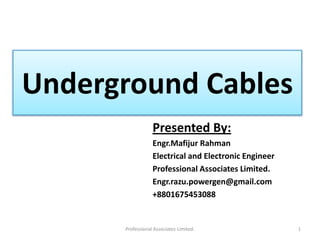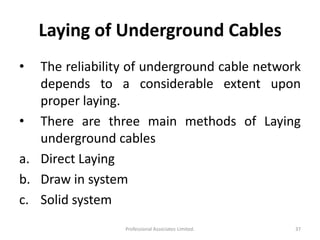The document provides a comprehensive overview of underground cables, detailing their construction, advantages, disadvantages, and the materials used for insulation. It covers various types of cables, installation methods, and the physical limitations of underground systems, particularly regarding their costs and operational constraints. Key faults in underground cables and diagnostic methods for identifying issues are also discussed.





















































